
Scientists now are able to recreate and study in the laboratory dust grains similar to the grains that form in the outer layers of dying stars. ...


Scientists now are able to recreate and study in the laboratory dust grains similar to the grains that form in the outer layers of dying stars. ...

This type of research can help scientists better understand what catalyst sets off large explosions on the Sun. ...
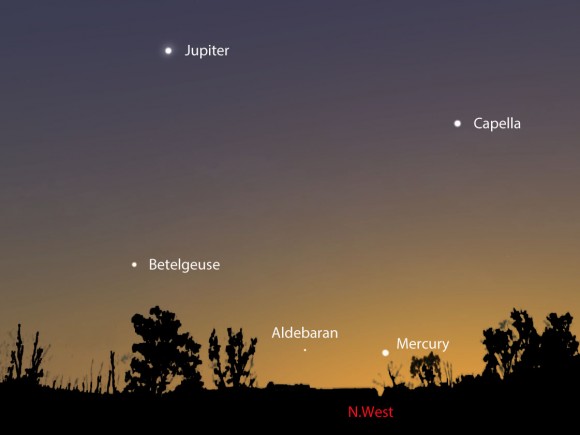
Don’t let furtive Mercury slip through your fingers this spring. The next two and a half weeks will be the best time this year for observers north of the tropics to spot the sun-hugging planet. If you’ve never seen Mercury, you might be surprised how bright it can be. This is especially true early in its apparition […]...
We record the Weekly Space Hangout every Friday at 12:00 pm Pacific / 3:00 pm Eastern. You can watch us live on Google , Universe Today, or the Universe Today YouTube page. susie for Universe Today, 2014. | Permalink | No comment | Post tags: Feed enhanced by Better Feed from Ozh...

Using data from NASA's Chandra X-ray Observatory and infrared telescopes, astronomers have made an important advance in the understanding of how clusters of stars come into being. Researchers studied two clusters where sun-like stars currently are forming -- NGC 2024, located in the center of the Flame Nebula, and the Orion Nebula Cluster. From this study, they discovered the stars on the outskirts...
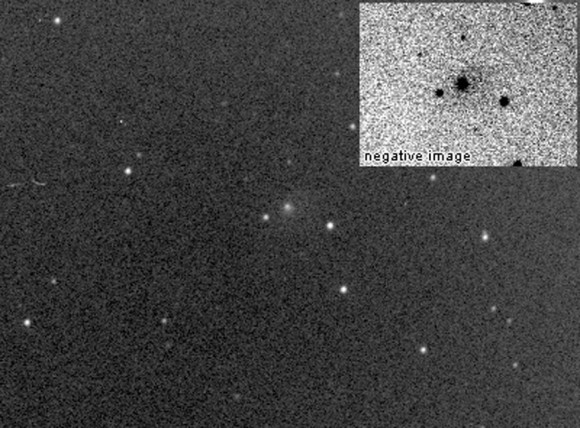
On October 23, 2013, astronomers with the Catalina Sky Survey picked up a very faint asteroid with an unusual orbit more like a that of a comet than an asteroid. At the time 2013 UQ4 was little more than a stellar point with no evidence of a hazy coma or tail that would tag it as a comet. […]...
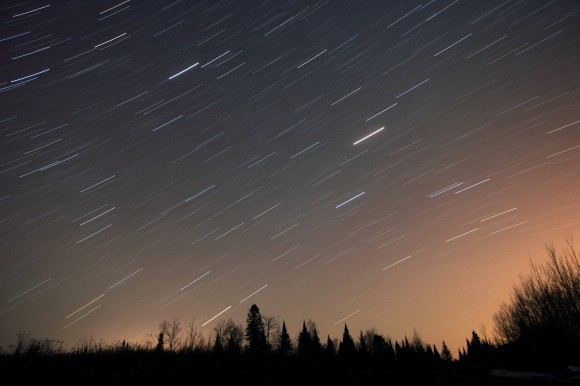
A week ago I made a 45-minute time exposure of the southern sky featuring the planet Mars. As the Earth rotated on its axis, the stars trailed across the sky. But take a closer look at the photo and you’ll see something interesting going on. (...)Read the rest of Star Trail Photo Hints at Hidden Polestars […]...
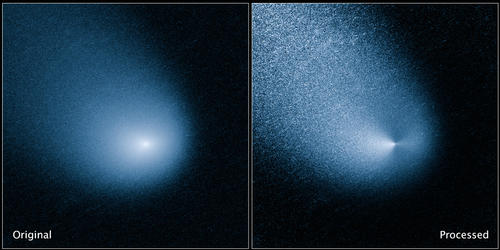
It may be the chance of a lifetime for planetary science. This October, a comet will brush past a planet, giving scientists a chance to study how it possibly interacts with a planetary atmosphere. The comet is C/2013 A1 Siding Spring, and the planet in question Mars. And although an impact of the comet on […]...
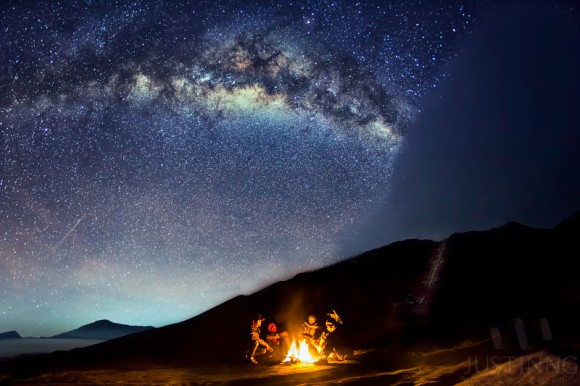
The Eta Aquarid meteor shower has graced the skies this week and while this hasn’t been an exceptionally active shower, here are a few beautiful photos we’ve received. Above astrophotographer Justin Ng climbed Mount Bromo in Indonesia on May 6, and had to contend with interference from the active volcano. “After having visited Mt. Bromo […]...
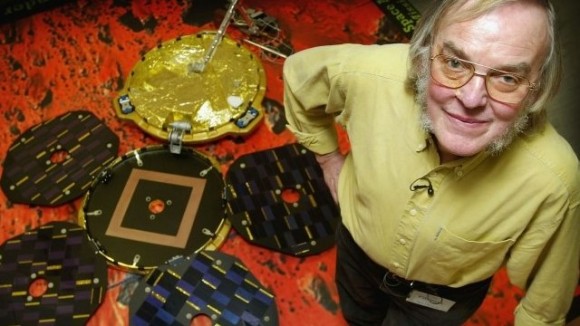
British planetary scientist Colin Pillinger has passed away. Pillinger, age 70, was best known as leading the 2003 attempt to land the Beagle 2 spacecraft on Mars, part of the European Space Agency’s Mars Express mission. (...)Read the rest of Planetary Scientist Colin Pillinger Dies (207 words) nancy for Universe Today, 2014. | Permalink […]...

A team of astronomers discovered a “hypervelocity star” that is the closest, second brightest, and among the largest of 20 found so far. ...

Scientists have discovered that star clusters form from the outside in, rather than from the inside out as previously thought. ...

Move over, Matrix - astronomers have done you one better. They have created the first realistic virtual universe using a computer simulation called 'Illustris.' Illustris can recreate 13 billion years of cosmic evolution in a cube 350 million light-years on a side with unprecedented resolution. ...

On March 29, 2014, an X-class flare erupted from the right side of the sun ... and vaulted into history as the best-observed flare of all time. The flare was witnessed by four different NASA spacecraft and one ground-based observatory -- three of which had been fortuitously focused in on the correct spot as programmed into their viewing schedule a full day in advance. ...

Rising 10,000 feet above the sunburned faces of 2.2 million tourists a year, the largest solar telescope on the planet is under construction atop Haleakala Crater in Maui, Hawaii. Never mind all those admonitions about never staring at the sun. Astronomers can’t wait for the chance. (...)Read the rest of Most Powerful Solar Telescope on […]...
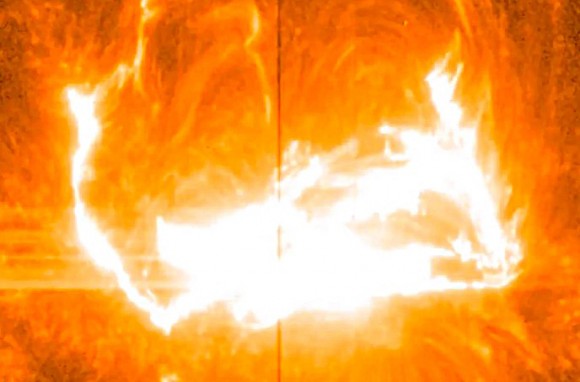
Are giant dragons flying out of the Sun? No, this is much more awesome than that: it’s an image of an X-class flare that erupted from active region 2017 on March 29, as seen by NASA’s Interface Region Imaging Spectrograph (IRIS) spacecraft. It was not only IRIS’s first view of such a powerful flare, but […]...
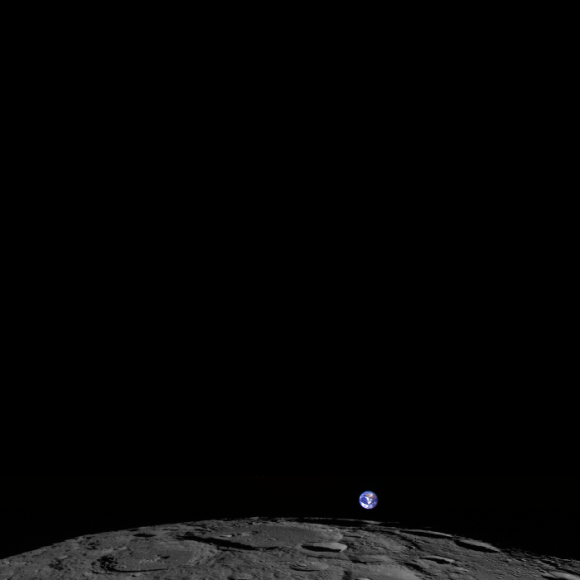
That’s Earth. That’s us. Way off in the distance as a fairly small, blue and swirly white sphere. This is the newest so-called “Earthrise” image, and it was taken on February 1, 2014 by the Lunar Reconnaissance Orbiter. “LRO experiences twelve earthrises every day, however LROC is almost always busy imaging the lunar surface so […]...
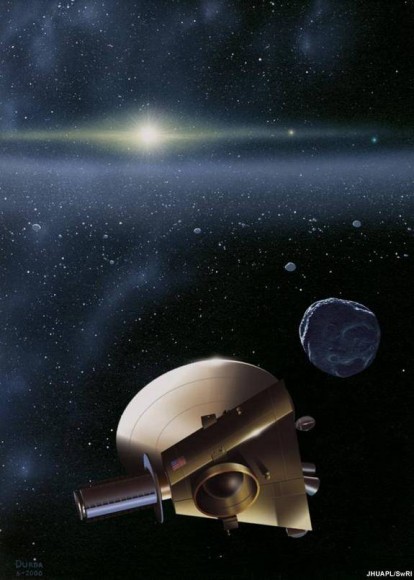
Are you ready for the summer of 2015? A showdown of epic proportions is in the making, as NASA’s New Horizons spacecraft is set to pass within 12,500 kilometres of Pluto — roughly a third of the distance of the ring of geosynchronous satellites orbiting the Earth — a little over a year from now on July […]...

The rock powder collected will be delivered to the rover’s internal instruments for analyzing. ...

Astronomers have discovered a "hypervelocity star" that is the closest, second-brightest and among the largest of 20 found so far. Speeding at more than 1 million mph, the star may provide clues about the supermassive black hole at the center of our Milky Way and the halo of mysterious "dark matter" surrounding the galaxy, astronomers say. ...